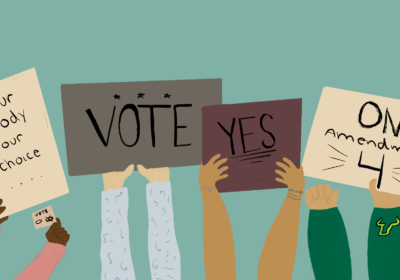Give the deathpenalty the chair
Last Thursday marked the first time a woman was put to death in the U.S. in five years.
A decade after successfully plotting the death of her husband and stepson, Teresa Lewis finally received so-called justice.
This execution has not come without some outcry from international sources, which use Lewis’ low IQ to argue lightening her punishment to life in prison instead. However, among those who spoke out against her execution was America’s favorite anti-Semite/conspiracy theorist, Iranian President Mahmoud Ahmadinejad, who complained of the West’s double standard about executions.
He’s alluding, of course, to a current situation in his country of Iran.
About 6,000 miles away in Tehran, a woman sits on death row. This woman, Sakineh Mohammadi Ashtiani, was sentenced in 2006 for adultery. Unlike Lewis’ painless execution, Ashtiani would have been stoned to death had it not been put on hold since July.
For Ahmadinejad, these two crimes are apparently comparable, and he finds it outrageous for our media to decry Ashtiani’s execution and not Lewis’.
While obviously spouting entertaining, anti-American rhetoric like usual, he does make me wonder if it’s time we rethink our capital punishment laws.
In 2009, 52 inmates were executed in 11 states, according to the U.S. Bureau of Justice. Currently, 35 states allow the death penalty, with the most usually occurring in Texas. However, while the number executed seems fairly low, the total population of inmates on death row is much higher.
As of January of this year, there were more than 3,000 inmates waiting on death row, all for an average of 10 years, like Lewis experienced. This may not seem like a big deal until you take into account the massive cost required.
According to the Death Penalty Information Center, it costs California’s taxpayers $90,000 a year to keep a convict on death row, nearly double the average cost of a normal inmate at $47,000. With 697 criminals currently residing there, this adds up to $62,730,000 a year – simply so we can kill them.
Sounds like a pretty big waste of money to me, especially in this economy.
Beyond the economic reasons to abolish the death penalty, one must not forget the moral and political implications of it as well, which for many people are the driving forces behind their protests. In fact, the Supreme Court suspended the death penalty in 1972, and said the penalty violated the Eighth Amendment by being cruel and unusual punishment.
Of course, being the violence-fueled culture we are, the death penalty resumed only four years later. To this day, we are one of only 58 countries and the only other permanent member of the U.N. Security Council besides China to implement it on a regular basis.
For a country that prides in its advancements, this makes us seem backward among the rest of the world.
Beyond all this, there’s always been one point that has upset me about the death penalty, and it’s the main reason I want it abolished.
Is dying really much of a punishment for these people?
These are society’s scum, either having taken others’ lives or committing treason against the U.S., yet they get a chance to really escape what they’ve done. Instead of suffering in a prison cell, dealing with other inmates and living with their actions, they instead only live in confinement on death row for a few years and then it’s over.
This seems much more of an escape than a punishment and, while unconstitutional, I’d rather see them suffer more.
So while we hope Ashtiani does not have to suffer death by stoning in Iran, I say it is time to change our own system as well. Punish these people with something far worse than the freedom of death and stop wasting money to support them in such bad economic times. Zachary Davis is a sophomore majoring in history at Louisiana State University.






